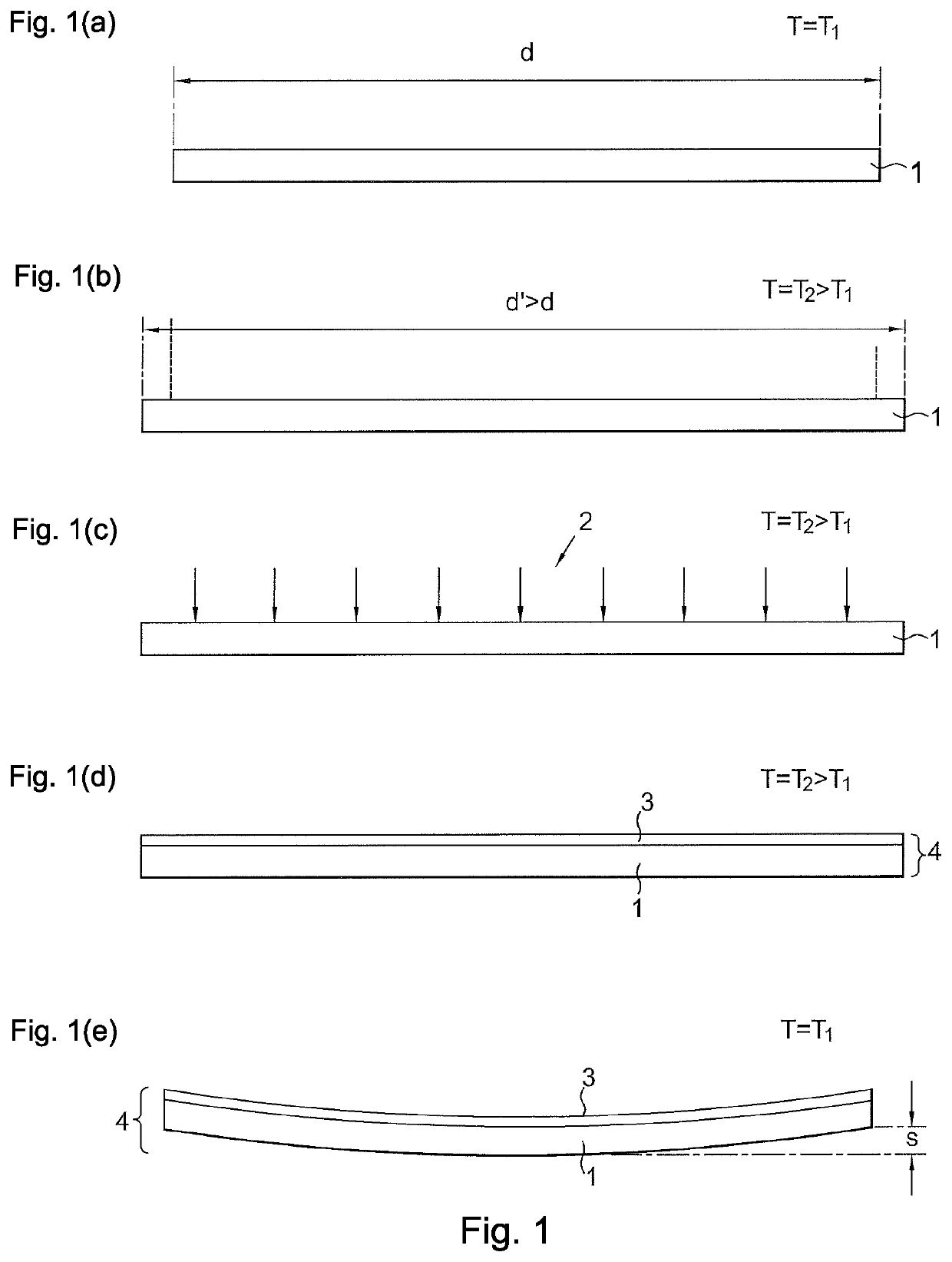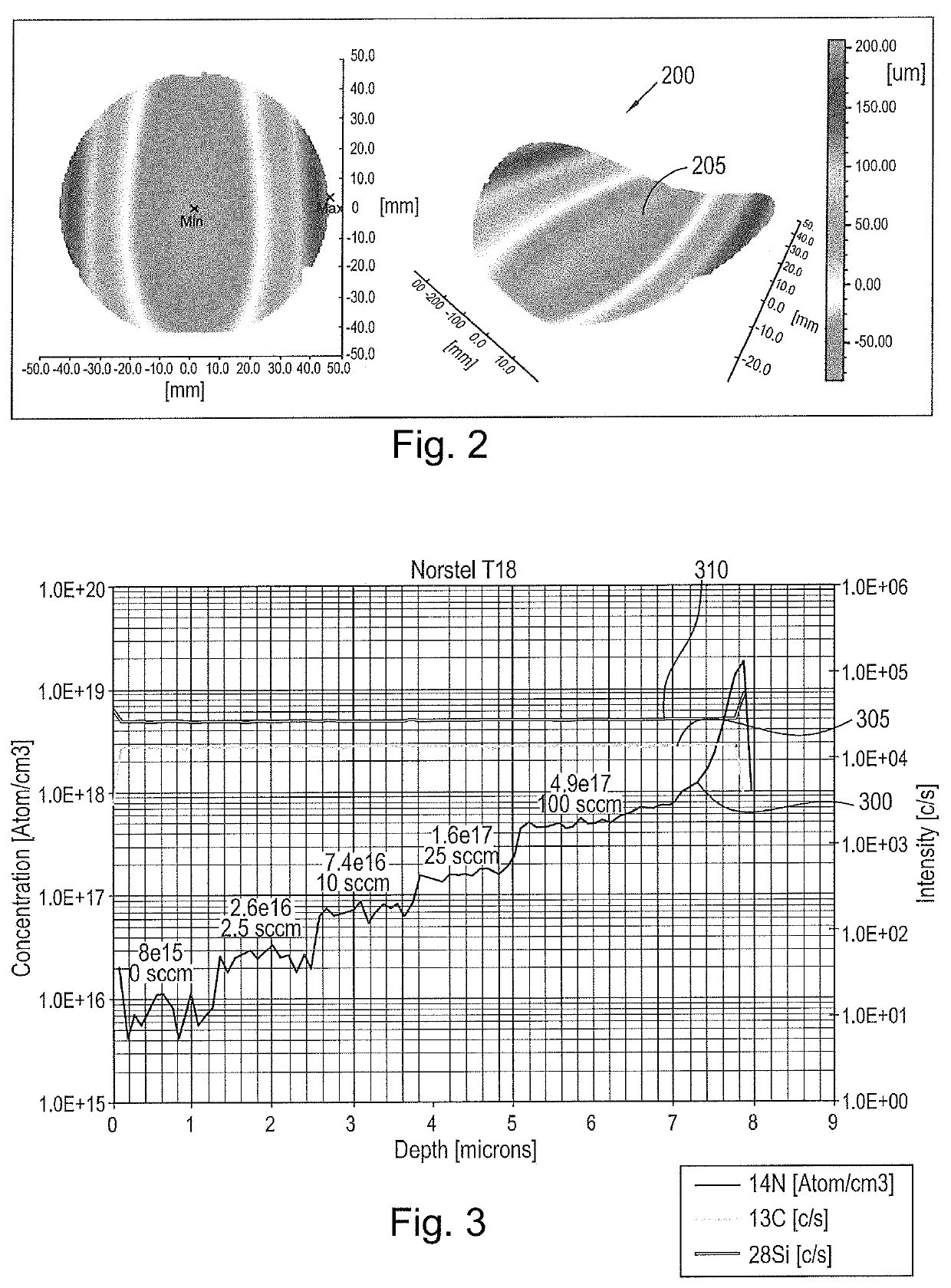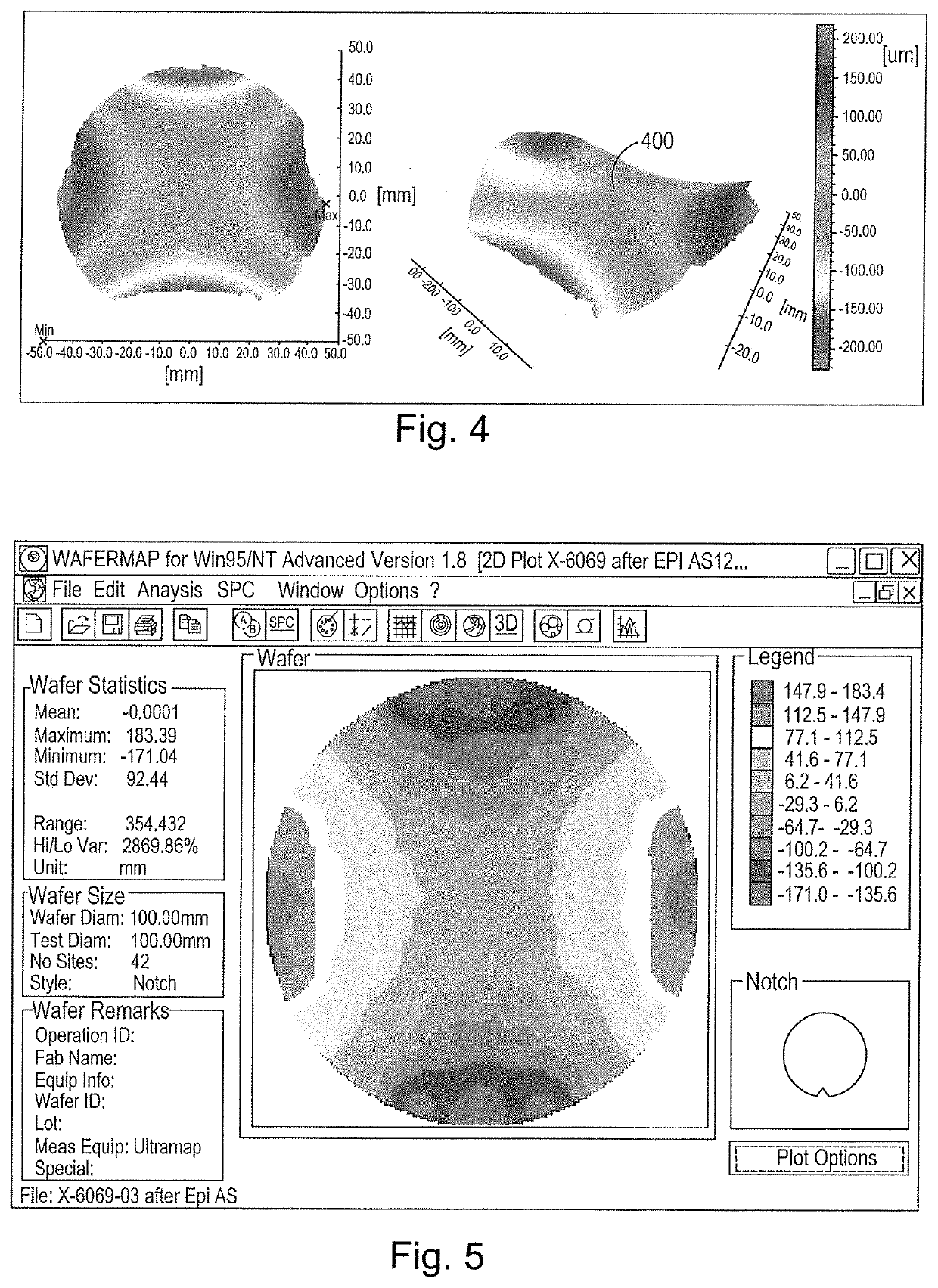Wafer bow reduction
a composite wafer and bow technology, applied in the direction of polycrystalline material growth, crystal growth process, chemically reactive gas, etc., to achieve the effect of reducing the bow of the wafer, reducing stress, and improving the robustness of the wafer
- Summary
- Abstract
- Description
- Claims
- Application Information
AI Technical Summary
Benefits of technology
Problems solved by technology
Method used
Image
Examples
Embodiment Construction
[0043]Before describing embodiments of the present invention, a silicon carbide / silicon heteroepitaxy process will be described with reference to FIGS. 1a to 1e which may be useful for understanding the present invention.
[0044]FIG. 1a shows a monocrystalline silicon wafer 1 at a room temperature (about 25° C.). The silicon wafer 1 serves as a seed wafer on which a layer of three-step cubic silicon carbide (3C—SiC) can be epitaxially grown. The silicon wafer 1 has a diameter, d.
[0045]The silicon wafer 1 is placed in a silicon carbide epitaxial reactor (not shown) and is heated to about 1350° C. As shown (in highly schematic form) in FIG. 1b, the silicon wafer 1 expands when heated. The heated wafer has a diameter, d′, greater than diameter, d, of the wafer at room temperature.
[0046]Referring to FIG. 1c, the heated silicon wafer 1 is exposed to a vapour 2 of silicon and carbon reactive species in a chemical vapour deposition (CVD) process. The vapour 2 adsorbs on the silicon wafer 1 f...
PUM
| Property | Measurement | Unit |
|---|---|---|
| height | aaaaa | aaaaa |
| compressive stress | aaaaa | aaaaa |
| doping concentration | aaaaa | aaaaa |
Abstract
Description
Claims
Application Information
 Login to View More
Login to View More - R&D
- Intellectual Property
- Life Sciences
- Materials
- Tech Scout
- Unparalleled Data Quality
- Higher Quality Content
- 60% Fewer Hallucinations
Browse by: Latest US Patents, China's latest patents, Technical Efficacy Thesaurus, Application Domain, Technology Topic, Popular Technical Reports.
© 2025 PatSnap. All rights reserved.Legal|Privacy policy|Modern Slavery Act Transparency Statement|Sitemap|About US| Contact US: help@patsnap.com



